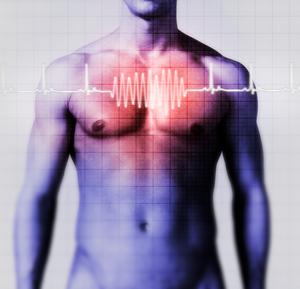If you are suffering from a heart condition, or high blood pressure, or angina, taking Norvasc will alleviate your condition. This drug is the besylate salt of amlodipine, a long-acting calcium channel blocker. Its main functions are to relax and widen your blood vessels, thus improving your blood flow.
Composition of Norvasc Tablets
Norvasc tablets are available as white tablets in 2.5, 5 and 10 mg sizes. They are mainly used for oral administration. Aside from its active ingredient (amlodipine besylate), Norvasc also contains dibasic calcium phosphate anhydrous, microcrystalline cellulose, magnesium stearate and sodium starch glycolate.
How Norvasc Works
 Amlodipine, the generic name of Norvasc, is a dihydropyridine calcium antagonist or slow-channel blocker. It inhibits the transmembrane influx of calcium ions into your vascular smooth muscle and cardiac muscle. Research data has proven that amlodipine binds to both dihydropyridine and nondihydropyridine binding sites.
Amlodipine, the generic name of Norvasc, is a dihydropyridine calcium antagonist or slow-channel blocker. It inhibits the transmembrane influx of calcium ions into your vascular smooth muscle and cardiac muscle. Research data has proven that amlodipine binds to both dihydropyridine and nondihydropyridine binding sites.
The contractile processes of your vascular smooth muscle and cardiac muscle depend upon the movement of extracellular calcium ions into these cells via specific ion channels. This is where Norvasc does its work. It inhibits calcium influx across your cell membranes selectively, doing its main work on your vascular smooth muscle cells and not so much on your cardiac muscle cells.
Being a peripheral arterial vasodilator which acts directly on vascular smooth muscle, Norvasc (Amlodipine) will cause a reduction in peripheral vascular resistance, resulting in the lowering of your blood pressure.
With regards to Angina, Norvasc’s actual mechanism of action is not yet fully ascertained. However, medical experimenters already have formulated the idea of how it works.
- For Vasopatic Angina – Norvasc has proven to block constriction and restore blood flow in coronary arteries and arterioles in response to potassium epinephrine, calcium, serotonin and thromboxane A2 analog in human coronary vessels in vitro. It has also done the same in animal experimental models. By inhibiting this coronary spasm, medical experimenters agreed on the efficacy of Narvasc in this type of health condition.
- Exertional Angina – Norvasc lowers the total peripheral resistance (afterload) which your heart works against and thus reducing the rate pressure product. This results in the reduction of myocardial oxygen demand at any given level of physical exertion.
Norvasc Leaves No Significant Adverse Side Effects on Your Body
Clinical experiments have shown that Norvasc do not leave any lingering and long-term adverse effects on the human body. Following the administration of therapeutic doses to patients with hypertension, Norvasc induces vasodilation in a reduction of supine and standing blood pressures. The good thing is: this reduction in blood pressure is not accompanied by a significant change in heart rate or plasma catecholamine levels even with chronic dosing.
Only when Norvasc was acutely administered in intravenous ways did it cause increases in heart rates of the patients, as shown in some hemodynamic studies. But when chronic oral administration is pursued in clinical trials, it did not lead to clinically significant changes in heart rate or blood pressure for patients suffering from angina.
Even hypersensitive patients with normal renal function did not show any adverse signs when therapeutic doses of Norvasc were pursued. They showed decreases in their renal vascular resistance and increases in their glomerular filtration and effective renal plasma flow, but they didn’t show any change in filtration fraction or proteinuria.
As to Norvasc’s electrophysiological effects, it does not change senatorial nodal function or atrioventricular conduction in animals or man. In patients suffering from chronic stable angina, even administering Norvasc intravenously did not dramatically change A-H and H-V conduction and sinus node recovery time after pacing. The same results were seen from patients who have taken Norvasc and similar beta-blockers.
Clinical studies have also shown that there were no significant changes of the electrocardiographic parameters of patients with hypertension or angina receiving therapeutic doses of Norvasc in combination with other forms of beta-blockers. These studies have also proven that the administration of Norvasc will not alter the electrocardiographic intervals or produce higher degrees of AV blocks.
In hemodynamic studies, experimenters also were not able to associate Norvasc with a negative inotropic effect when administered in therapeutic doses, even in combination with other beta-blockers.
Norvasc’s Efficacy in Treating Hypertension and Angina
Several serious medical conditions can be effectively alleviated with the therapeutic administration of Norvasc. These diseases include:
- Hypertension in adults and children
- The efficacy of Norvasc has been demonstrated in a total of 15 double-blind placebo-controlled, randomized studies that included 800 patients on Norvasc and 539 patients on placebo.
- Chronic Stable Angina – the efficacy of Norvasc has been proven in 9 placebo-controlled, double-blind clinical trials with a duration of 6 weeks that included 1038 patients comprising of 684 Norvasc takers and 354 placebo takers.
- Vasopastic Angina – Norvasc efficacy was also proven during a double-blind, placebo- controlled clinical trial of 4 weeks that included 50 patients.
Share This